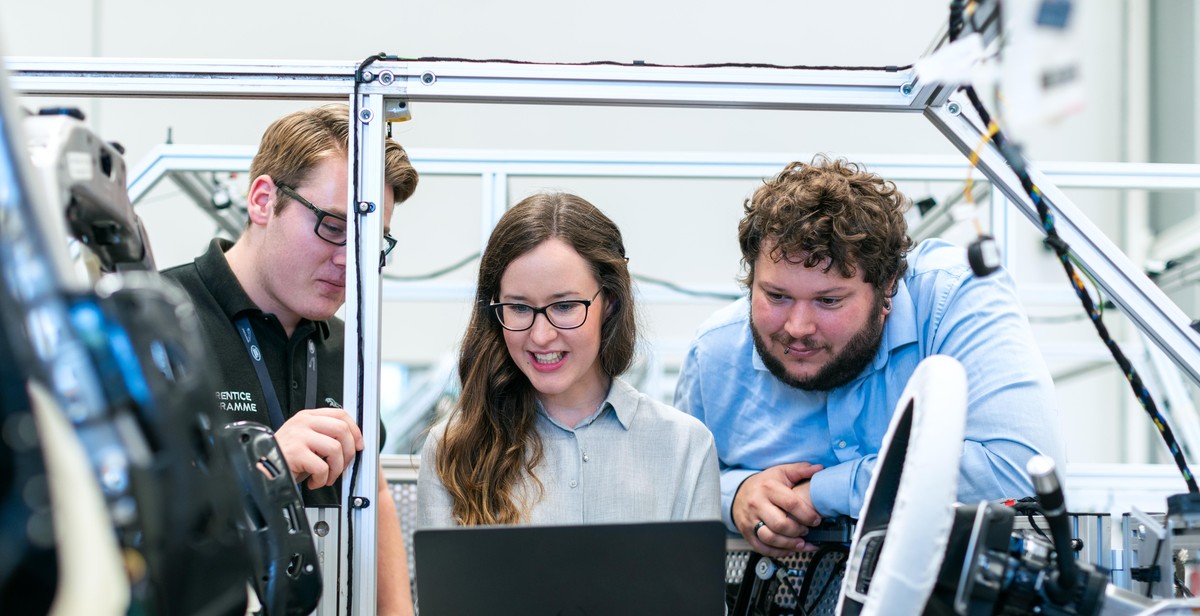Introduction
Car electrical issues can be frustrating and difficult to diagnose, especially for those without prior experience or knowledge in automotive electrical systems. However, understanding car electrical issues is crucial for both car owners and mechanics alike, as it can prevent further damage to the vehicle and ensure safe driving conditions.
Understanding Car Electrical Issues
Car electrical issues can range from simple problems like a blown fuse or a dead battery to more complex issues like faulty alternators or wiring problems. These issues can affect various components of the car, including the lights, radio, power windows, and even the engine.
It’s important to note that modern cars are equipped with complex electrical systems that require specialized knowledge and tools to diagnose and fix. Therefore, it’s always recommended to seek the help of a professional mechanic if you’re unsure about the nature of the problem.
Why It’s Important to Diagnose and Fix Car Electrical Issues
Ignoring electrical issues in your car can lead to further damage and even safety hazards. For example, faulty wiring can cause a fire, while a malfunctioning alternator can cause the battery to die, leaving you stranded on the road.
Moreover, diagnosing and fixing car electrical issues early on can save you money in the long run. Ignoring a small issue can lead to more significant problems that require expensive repairs or part replacements.
In the next sections, we’ll discuss some common car electrical issues and how to diagnose and fix them.

Common Car Electrical Issues
Car electrical issues can be frustrating and leave you stranded on the side of the road. Here are some of the most common car electrical issues and how to diagnose and fix them:
Dead Battery
A dead battery is one of the most common car electrical issues. Signs of a dead battery include difficulty starting the car, dimming headlights, and a clicking sound when turning the key in the ignition. To diagnose a dead battery, use a multimeter to test the voltage. If the voltage is below 12.6 volts, the battery needs to be charged or replaced. To prevent a dead battery, make sure to turn off all electronics when the car is not running and have the battery tested regularly.
Faulty Alternator
The alternator is responsible for charging the battery while the car is running. Signs of a faulty alternator include a dead battery, dimming headlights, and a warning light on the dashboard. To diagnose a faulty alternator, use a multimeter to test the voltage while the car is running. If the voltage is below 13.5 volts, the alternator needs to be replaced. To prevent a faulty alternator, have it tested regularly and replace it as needed.
Blown Fuses
Fuses protect the electrical system from overload and short circuits. Signs of a blown fuse include a non-functioning component, such as a radio or power window. To diagnose a blown fuse, use a fuse tester or multimeter to test for continuity. If the fuse is blown, replace it with a new one of the same amperage. To prevent blown fuses, avoid overloading circuits and have the electrical system inspected regularly.
Starter Issues
The starter is responsible for turning the engine over when the key is turned in the ignition. Signs of starter issues include a clicking sound or no sound at all when turning the key. To diagnose starter issues, use a multimeter to test the voltage and check the connections. If the voltage is low or the connections are loose, tighten or replace them as needed. If the starter is faulty, it needs to be replaced. To prevent starter issues, have the starter tested regularly and replace it as needed.
Malfunctioning Lights
Malfunctioning lights can include headlights, taillights, and interior lights. Signs of malfunctioning lights include flickering, dimming, or non-functioning lights. To diagnose malfunctioning lights, check the connections and bulbs. If the connections are loose, tighten them. If the bulbs are burnt out, replace them. To prevent malfunctioning lights, have the electrical system inspected regularly and replace bulbs as needed.
Damaged Wiring
Damaged wiring can cause a variety of electrical issues, including non-functioning components and short circuits. Signs of damaged wiring include melted or frayed wires and non-functioning components. To diagnose damaged wiring, visually inspect the wiring and use a multimeter to test for continuity. If the wiring is damaged, it needs to be repaired or replaced. To prevent damaged wiring, avoid overloading circuits and have the electrical system inspected regularly.

Diagnosing Car Electrical Issues
Car electrical issues can be frustrating and can leave you stranded on the side of the road. However, diagnosing and fixing these issues can be easier than you think. Here are some steps you can follow to diagnose common car electrical issues:
Using a Multimeter
A multimeter is a handy tool that can help you diagnose electrical issues in your car. You can use it to check the voltage of the battery, alternator, and other electrical components. Multimeters are available at most auto parts stores and are relatively easy to use. Make sure to read the instructions carefully before using one.
Checking the Battery
The first step in diagnosing an electrical issue is to check the battery. A dead or weak battery can cause a variety of problems, including difficulty starting the car and dimming headlights. To check the battery, use a multimeter to measure the voltage. A fully charged battery should read around 12.6 volts. If the voltage is lower than this, the battery may need to be charged or replaced.
Testing the Alternator
The alternator is responsible for charging the battery and powering the electrical components of the car while it is running. If the alternator is not working properly, the battery will not be charged and the car may not start. To test the alternator, use a multimeter to measure the voltage while the car is running. The voltage should be around 14 volts. If it is lower than this, the alternator may need to be replaced.
Inspecting the Fuses
Fuses are designed to protect the electrical components of the car from damage caused by power surges or short circuits. If a fuse blows, it can cause a variety of electrical issues. To inspect the fuses, locate the fuse box in your car and check each fuse for signs of damage or a broken filament. If a fuse is blown, replace it with a new one of the same amperage rating.
Examining the Starter Motor
The starter motor is responsible for turning the engine over when you turn the key. If the starter motor is not working properly, the engine will not start. To examine the starter motor, use a multimeter to measure the voltage while someone turns the key. If the voltage is low or nonexistent, the starter motor may need to be replaced.
Inspecting the Wiring
Wiring issues can cause a variety of electrical problems in your car. To inspect the wiring, visually check all of the wires and connections for signs of damage, corrosion, or loose connections. If you find any issues, repair or replace the affected wires or connections.
By following these steps, you can diagnose and fix common car electrical issues. However, if you are not comfortable working with electrical components or if the issue is more complex, it may be best to take your car to a professional mechanic for diagnosis and repair.

Fixing Car Electrical Issues
Car electrical issues can be frustrating and inconvenient. However, many common electrical problems can be diagnosed and fixed without the need for a mechanic. Here are some common car electrical issues and how to fix them:
Replacing the Battery
If your car won’t start or the lights are dim, it may be time to replace the battery. First, ensure that the battery terminals are clean and tight. If the problem persists, remove the old battery and replace it with a new one. Be sure to dispose of the old battery properly.
Replacing the Alternator
If your car battery is constantly dying or the lights are flickering, it may be a sign that the alternator is failing. To replace the alternator, first, disconnect the battery and remove the serpentine belt. Then, remove the old alternator and install the new one. Reconnect the serpentine belt and battery.
Replacing Fuses
If a particular electrical component in your car, such as the radio or power windows, stops working, it may be due to a blown fuse. Locate the fuse box in your car and check the fuses. If a fuse is blown, replace it with a new one of the same amperage rating.
Replacing the Starter Motor
If your car won’t start, it may be due to a failing starter motor. To replace the starter motor, first, disconnect the battery. Then, remove the starter motor and install the new one. Reconnect the battery.
Replacing the Lights
If a headlight or taillight is out, it may be time to replace it. First, locate the bulb holder and remove it. Then, remove the old bulb and replace it with a new one. Be sure to use the correct bulb for your car.
Repairing Damaged Wiring
If your car’s electrical system is malfunctioning, it may be due to damaged wiring. To repair damaged wiring, first, locate the damaged wire. Cut out the damaged section and strip the ends of the wire. Then, splice in a new section of wire and secure it with electrical tape or wire connectors.
| Issue | Solution |
|---|---|
| Car won’t start | Replace the battery or starter motor |
| Lights flickering | Replace the alternator |
| Electrical component not working | Check and replace fuses |
| Headlight or taillight out | Replace the bulb |
| Malfunctioning electrical system | Repair damaged wiring |

Preventing Car Electrical Issues
Preventing car electrical issues is essential to ensure your vehicle runs smoothly and avoid costly repairs. Here are some tips to help you keep your car’s electrical system in top shape:
Regular maintenance
Regular maintenance is key to preventing car electrical issues. Have your car’s electrical system inspected by a professional mechanic at least once a year. They can identify any potential issues and fix them before they become major problems.
Using high-quality parts
Using high-quality parts is another way to prevent car electrical issues. Cheap, inferior parts may save you money in the short term, but they can cause serious problems down the line. Always use high-quality parts that are specifically designed for your car.
Proper installation
Proper installation is crucial when it comes to preventing car electrical issues. Always have new parts installed by a professional mechanic who knows what they’re doing. Improper installation can cause damage to your car’s electrical system and lead to costly repairs.
- Always follow the manufacturer’s instructions when installing new parts.
- Make sure all connections are secure and properly grounded.
- Check for any signs of wear or damage before installing new parts.
Conclusion
Preventing car electrical issues is all about regular maintenance, using high-quality parts, and proper installation. By following these tips, you can keep your car running smoothly and avoid costly repairs.
